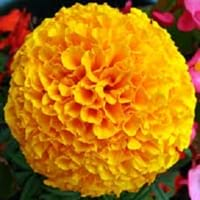Life Span
Perennial
Annual
Type
Shrub
Flowering Plants
Origin
North America, United States, Northeastern United States, Mid-Atlantic United States, Southeastern United States, Canada
Mexico, Central America
Types
Red chokeberry, Purple chokeberry
Not Available
Number of Varieties
Not Available
Habitat
Anthropogenic, Boggy areas, Cliffs, Fens, Swamps, Terrestrial, Wet lands, Woodlands
Forest edges, gardens, Grassland, Homesteads, Rocky areas, Woods
USDA Hardiness Zone
3-8
9-11
Sunset Zone
A2, A3, 1a, 1b, 2a, 2b, 3a, 3b, 4, 5, 6, 7
A1, A2, A3, H1, H2, 1a, 1b, 2a, 2b, 3a, 3b, 4, 5, 6, 7, 8, 9, 10, 11, 12, 13, 14, 15, 16, 17, 18, 19, 20, 21, 22, 23, 24
Habit
Thicket/Colonizing
Upright/Erect
Flower Color
Not Available
White, Ivory
Flower Color Modifier
Not Available
Bicolor
Fruit Color
Purplish-black
Not Available
Leaf Color in Spring
Not Available
Dark Green
Leaf Color in Summer
Not Available
Dark Green
Leaf Color in Fall
Not Available
Dark Green
Leaf Color in Winter
Not Available
Light Green
Leaf Shape
Elliptic
Arrowhead
Plant Season
Spring, Summer, Fall
Summer, Fall
Sunlight
Full Sun, Partial Sun, Partial shade
Full Sun
Growth Rate
Medium
Very Fast
Type of Soil
Clay, Loam
Loam, Sand
The pH of Soil
Acidic, Neutral, Alkaline
Neutral, Alkaline
Soil Drainage
Average
Well drained
Bloom Time
Late Spring, Early Summer
Indeterminate
Tolerances
Not Available
Drought
Where to Plant?
Ground, Pot
Ground, Pot
How to Plant?
Cuttings, Divison, Seedlings
Stem Planting, Vegetative Reproduction
Plant Maintenance
Medium
Medium
Watering Requirements
Average Water Needs, Do Not over Water, Requires regular watering
Allow soil to be completely dry in between waterings, Requires regular watering, Water occasionally
In Summer
Lots of watering
Lots of watering
In Spring
Moderate
Moderate
In Winter
Average Water
Average Water
Soil pH
Acidic, Neutral, Alkaline
Slightly Alkaline
Soil Type
Clay, Loam
Well drained
Soil Drainage Capacity
Average
Well drained
Sun Exposure
Full Sun, Partial Sun, Partial shade
Bright Indirect Sunlight
Pruning
Prune after flowering, Remove branches that rub together, Remove damaged leaves, Remove dead branches, Remove dead leaves, Remove diseased branches by the tool's blades dipped into the alcohol solution
Prune regularly
Fertilizers
10-10-10, All-Purpose Liquid Fertilizer, Apply N-P-K
All-Purpose Liquid Fertilizer
Pests and Diseases
Red blotch
Red blotch
Plant Tolerance
Not Available
Drought
Flower Petal Number
Not Available
Double
Fragrant Bark/Stem
No
Yes
Foliage Texture
Not Available
Medium
Foliage Sheen
Not Available
Matte
Attracts
Not Available
Butterflies
Allergy
Anaphylaxis
no allergic reactions
Aesthetic Uses
Showy Purposes
Beautification
Beauty Benefits
Good for skin
Not Available
Environmental Uses
Air purification, Food for birds, Wildlife
Air purification
Medicinal Uses
anti-cancer, Antioxidants, Cold
Gastrointestinal disorders, Skin Disorders
Part of Plant Used
Fruits
Whole plant
Other Uses
Pectin
Decoration Purposes, Not Available
Used As Indoor Plant
No
Yes
Used As Outdoor Plant
Yes
Yes
Garden Design
Foundation, Mixed Border
Foundation, Houseplant, Mixed Border, Rock Garden
Botanical Name
ARONIA melanocarpa
TAGETES erecta 'French Vanilla'
Common Name
Black Chokeberry
African Marigold
In Hindi
Black Chokeberry Shrub
अफ्रीकी गेंदा
In German
Schwarz Aronia Strauch
Studentenblume
In French
Noir Chokeberry Arbuste
Marigold africaine
In Spanish
Chokeberry negro Arbusto
caléndula africana
In Greek
Μαύρο Chokeberry θάμνων
Αφρικής κατιφές
In Portuguese
Chokeberry preto Arbusto
marigold africano
In Polish
Krzew aronii
afrykański nagietka
In Latin
Lichen Frutex
African pingit vaccinia caltha
Phylum
Magnoliophyta
Not Available
Class
Magnoliopsida
Magnoliopsida
Family
Rosaceae
Asteraceae
Clade
Angiosperms, Eudicots, Rosids
Angiosperms, Asterids, Eudicots
Subfamily
Amygdaloideae
Asteroideae
Number of Species
Not Available
Season and Care of Black Chokeberry and African Marigold
Season and care of Black Chokeberry and African Marigold is important to know. While considering everything about Black Chokeberry and African Marigold Care, growing season is an essential factor. Black Chokeberry season is Spring, Summer and Fall and African Marigold season is Spring, Summer and Fall. The type of soil for Black Chokeberry is Clay, Loam and for African Marigold is Loam, Sand while the PH of soil for Black Chokeberry is Acidic, Neutral, Alkaline and for African Marigold is Neutral, Alkaline.
Black Chokeberry and African Marigold Physical Information
Black Chokeberry and African Marigold physical information is very important for comparison. Black Chokeberry height is 182.88 cm and width 182.88 cm whereas African Marigold height is 45.70 cm and width 25.40 cm. The color specification of Black Chokeberry and African Marigold are as follows:
Black Chokeberry flower color: Not Available
Black Chokeberry leaf color: Not Available
African Marigold flower color: White and Ivory
- African Marigold leaf color: Dark Green
Care of Black Chokeberry and African Marigold
Care of Black Chokeberry and African Marigold include pruning, fertilizers, watering etc. Black Chokeberry pruning is done Prune after flowering, Remove branches that rub together, Remove damaged leaves, Remove dead branches, Remove dead leaves and Remove diseased branches by the tool's blades dipped into the alcohol solution and African Marigold pruning is done Prune regularly. In summer Black Chokeberry needs Lots of watering and in winter, it needs Average Water. Whereas, in summer African Marigold needs Lots of watering and in winter, it needs Average Water.





